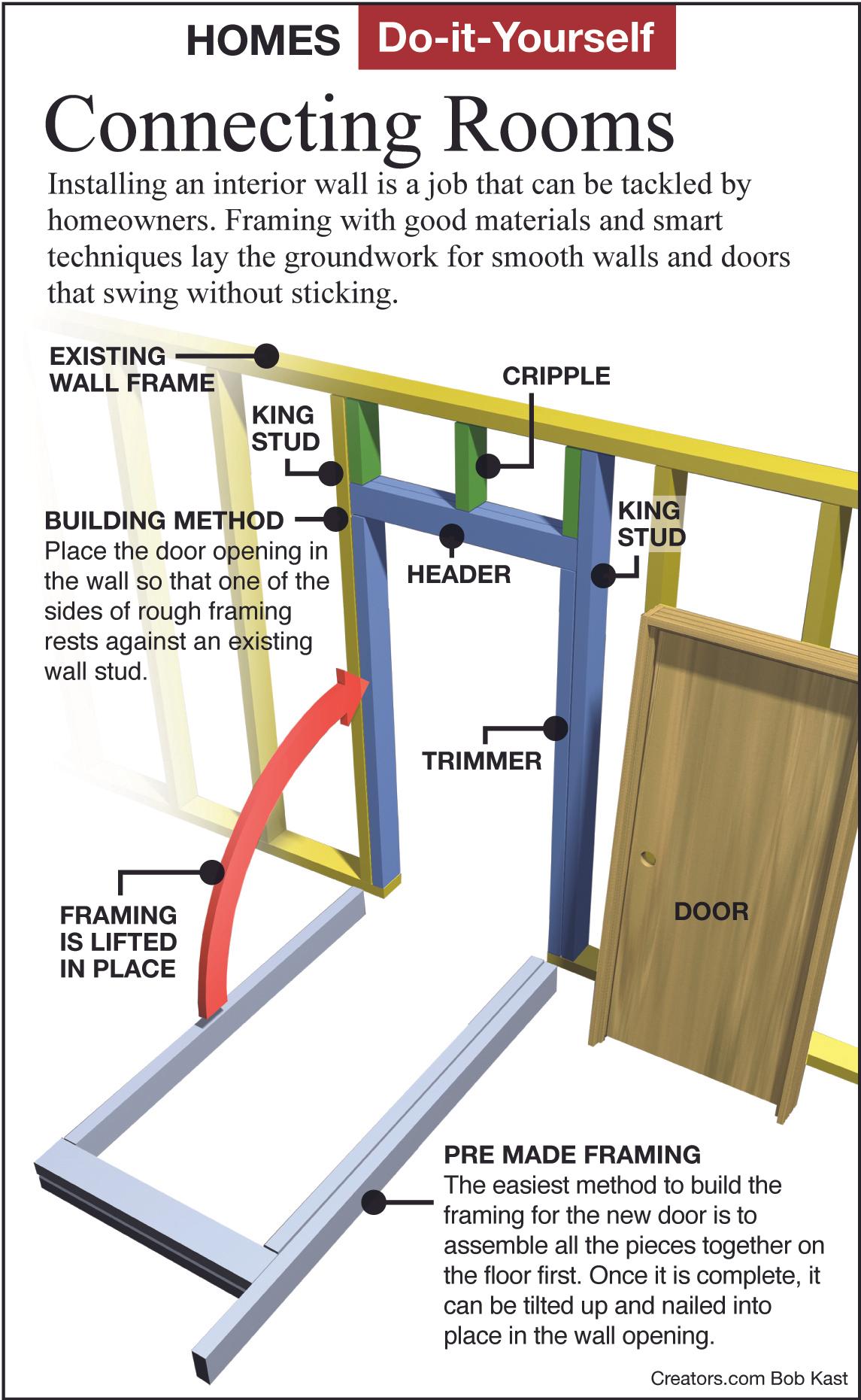There are several common size options for an interior door. Most interior doors are six feet, eight inches tall. Thirty inches wide is very common, but wider ones are available, making it easier to move furniture through the doorway. A solid wood door is more expensive than a hollow fiberglass one, but the mass of solid wood will block more sound transmission, especially low-frequency sounds.
The wall should not be a load-bearing wall. Make certain of this before you start cutting the hole in the wall. If you still have the building plans for your house, this may be indicated on the plans. If you are not absolutely certain, have a builder inspect it to determine if it is load-bearing. Load-bearing walls require stronger lumber for the rough opening.
Locate the hole in the wall so that one of the sides of rough framing rests against an existing wall stud. The king studs are the outermost studs of the framing. One king stud will rest against the existing wall stud and the other one will be located in between existing studs. A good target distance between the king studs is the width of the new door plus five inches. Shorter trimmer studs are nailed inside of the king studs.
The easiest method to build the framing for the new door is to assemble all of the pieces together on the floor first. Once it is complete, it can be tilted up and nailed into place in the wall opening. Building it this way minimizes the need for toenailing, which creates a weaker joint than regular through-nailing.
The header, which is the top of the opening, can be made with just a two-by-four on its side for non-load-bearing walls. For load-bearing walls, double two-by-eight-inch lumber on edge should provide plenty of strength to support a room above it. Small two-by-four cripples will be nailed in place between the top plate and the header. These can be spaced closer together than standard wall stud spacing. The header will rest on the tops of the trimmer studs.
It is critical to keep all the ends flush and the framing square. If the opening is not square, it will be difficult to get the door installed squarely. A carpenter’s square can be very helpful with keeping all the parts lined up properly.
In order to minimize having to toenail, first nail the trimmers to the king studs. Follow standard code nailing patterns for adequate strength. Next through-nail the header to the king studs and trimmers. Nail the cripples to the header. Tilt up the framing and nail it in place in the wall opening.






